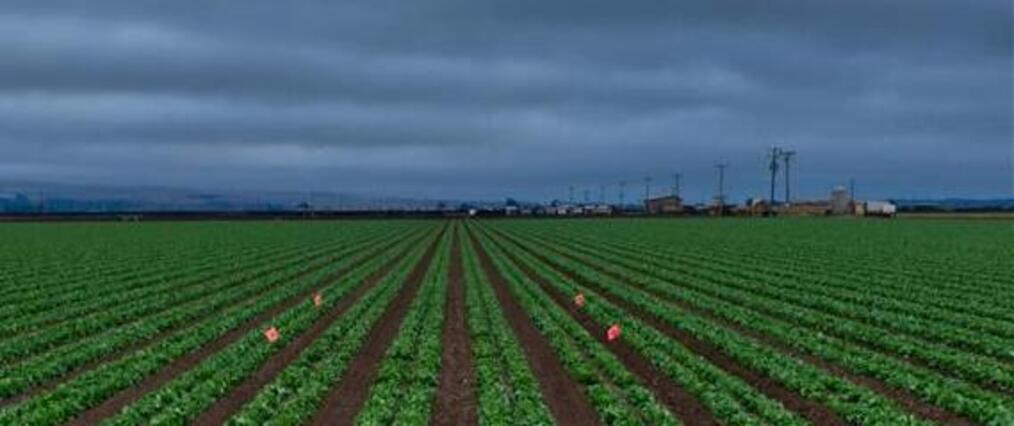Executive Summary
In the 80 years since World Food Day was first established, the transformation of agriculture, fueled by fertilizers and international trade, has helped reduce global hunger – albeit unevenly across regions. Since 1961, the global calorie supply has increased by around +35%, contributing to a reduction in undernourishment worldwide. While global hunger declined by almost -4% between 2000 and 2023, South-Eastern Asia lowered the prevalence of hunger from 20% to 6% during the same period, with Latin America and parts of South Asia recording comparable improvements. Yet, Sub-Saharan Africa continues to face acute food insecurity, with nearly one-quarter of its population undernourished.
But advancements in agriculture have come with high environmental and systemic costs. The transport of agricultural products generates roughly 3 gigatons of CO₂ equivalent annually, accounting for nearly one-fifth of total emissions from the food system. Food freight represents less than one-fifth of overall transport activity but produces over one-quarter of transport-related emissions, with fruit and vegetable shipments especially intensive. Fertilizer inefficiency is another major challenge: on average, only 40% of applied nitrogen is absorbed by crops. The remainder leaks into ecosystems, degrading water quality and creating hypoxic “dead zones”. In the US alone, damages from freshwater eutrophication are estimated at USD2.2bn annually.
Agriculture faces a double materiality risk: it drives climate change and environmental degradation while being among the sectors most vulnerable to them. Over the past three decades, natural disasters have caused an estimated USD 3.8 trillion in agricultural losses – equivalent to 5% of global agricultural GDP per year – with droughts accounting for two-thirds of the damage. The 2022 European megadrought alone affected 143,000 km² of land, reducing vegetation productivity on 66,500 km² of cropland (+13% above the long-term average). In Europe, cereal yields fell by roughly -10%, while agricultural and environmental losses reached EUR50bn that year. In the US, drought remains the dominant driver of agricultural losses, with record indemnities during 2012, 2020 and 2022. Other hazards – such as floods, excess moisture and freeze events – have also increased, revealing a growing volatility of climate risks. Most losses are concentrated in corn and soybean production, exposing structural vulnerabilities in the US food system and highlighting the urgency of diversification and adaptation. Weather-related insurance payouts in 2023 were seven times higher than in 2000, underscoring the mounting financial burden on farmers and the federal insurance system.
Looking ahead, our analysis suggests that by 2050, maize yields could decline by -9%, wheat by -7%, and soybeans by -4%, triggering inflationary ripple effects, most notably in the Asia-Pacific region (+27%) and Europe (+6%). By 2050, fluctuations in crop yields could fuel global food inflation, pushing consumer prices about 13% above the baseline. The Asia-Pacific region is projected to experience the steepest rise (+27%), led by countries such as Indonesia (+146%), Malaysia (+113%), India (+31%) and China (+21%). Beyond agricultural risks, this poses a macroeconomic threat as climate-driven food inflation may trigger broader economic, social and financial instability. Furthermore, falling yields and increasing agricultural commodity prices could squeeze margins of agrifood companies: we estimate that every 1pp increase in price leads to about a -1.67pp decline profitability for both upstream and downstream companies.
To secure food and economic stability, agriculture needs to build resilience in a changing climate. The global food system must strengthen adaptation along four key pillars: farmer practices, technological innovation, government support and financial safety nets. Insurance is among the most effective tools to strengthen financial resilience. Parametric insurance products, which link payouts to objective measures such as rainfall or yields, provide speed and affordability while reducing administrative costs. Policy action is helping scale these instruments: the EU now subsidizes up to 70% of premiums, a move expected to help double the global index insurance market in the next decade, from USD18bn today to USD34.4bn by 2033. However, access remains highly constrained for smallholder farmers, particularly in developing countries. For these farmers, microinsurance offers a more practical solution: The potential market is vast, covering nearly 3bn people, yet actual coverage reaches only 11.5% globally and just 8.2% in Africa.
